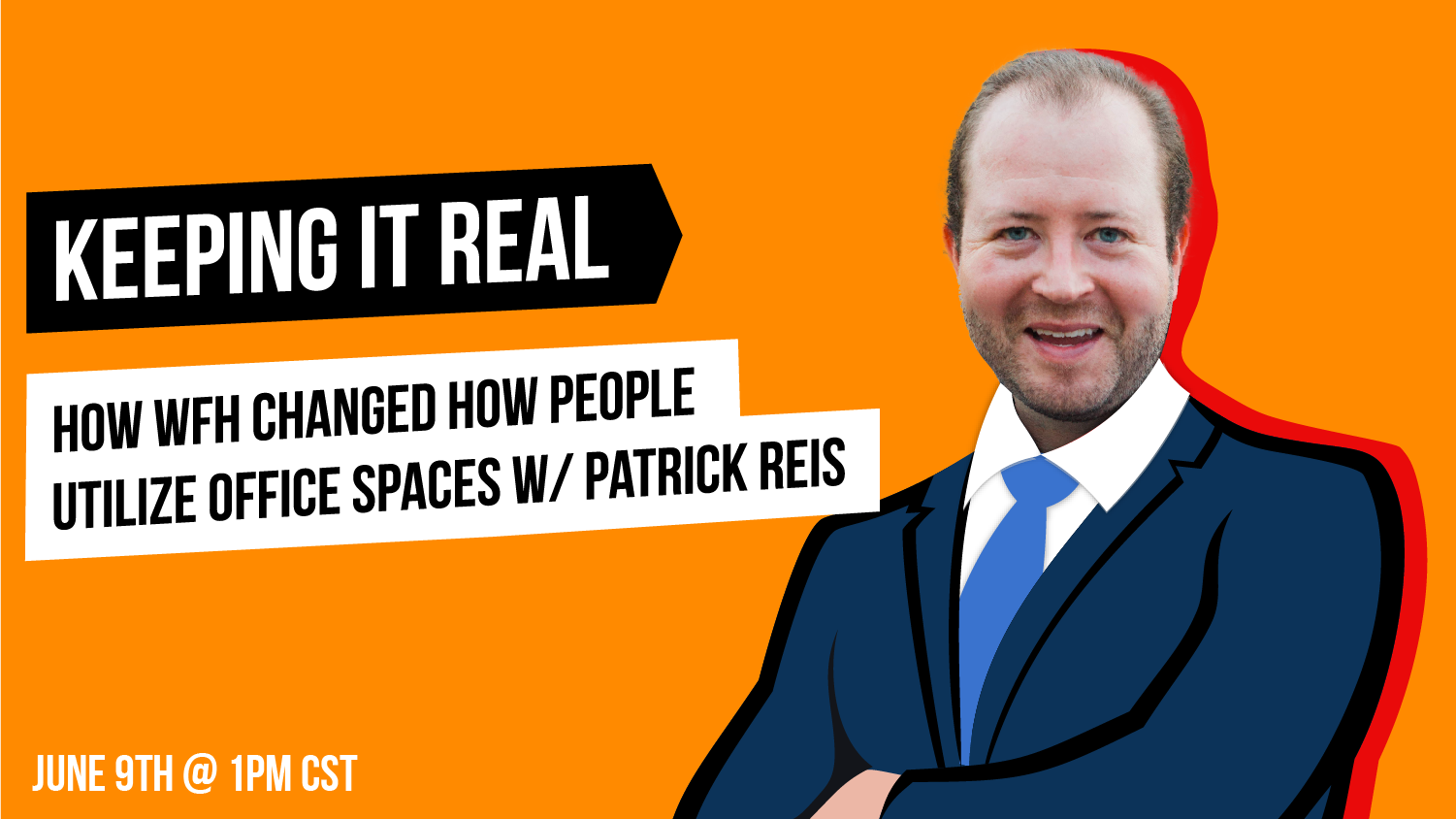How WFH Changed How People Utilize Office Spaces w/ Patrick Reis

June 15, 2022
When COVID-19 hit in 2020, a lot changed — and is still changing — especially in how people use office spaces. The pandemic has forced many companies to adopt or enhance their work from home (WFH) policies. As a result, there’s been a decrease in the amount of time people spend in the office.
For some, this has been a difficult transition. Some workers — specifically the older generation — thrive in an office environment and find it hard to focus when working from home. Others experience the complete opposite; they work better in quiet environments, away from the hustle and bustle of an office.
Regardless of which side you fall into, there’s no denying that working from home has impacted how people use office spaces.
Companies Are Downsizing Workspaces
In the past, companies were worried about how their employees would take to WFH. However, they are now more accepting of the idea. This has led many companies to downsize their office spaces or give them up altogether.
Companies are now more comfortable with single-story offices. Office spaces where people can easily go in and out have become more popular. CEOs prefer spaces with no elevators or common areas to ensure social distancing.
While companies know that many employees — especially the younger generation — prefer to work from home, they are still trying to find a balance. This is why high-end offices that have the “live, work, play” mindset have also taken a hit. Many companies are now choosing more suburban locations, assuring employees they can still have an excellent work-life balance.
Decisions Are Taking Longer
Since the pandemic, buying property and leasing an office has become more complicated. In the past, companies made these decisions quickly. Now, they are taking much longer as companies want to ensure they’re making the best decision for their employees — and their budget.
Several factors come into play when making these decisions. For example, will the company allow WFH? If so, how often? What type of office space do they need? How many people will be working in the office?
All of these questions must be answered before a decision can be made. And even then, there’s no guarantee that the decision won’t change. After all, we are still in the middle of a pandemic, and things can change anytime.
Leases Are Falling Through
There are also many cases where companies have signed leases, only to have them fall through. This is usually because the company has decided to change its business models, or they’ve realized that getting employees back into the office is more challenging than they thought.
This led to shorter-term deals, which have become more common in the office market. Two, three, or five-year deals have pushed ten-year deals to the side. It’s also led to more landlords being flexible with their tenants, offering more termination options.
The Future of Office Spaces
It is not easy to predict the future, but it is safe to say that the pandemic has changed the office space landscape and will continue to do so. WFH has become the new norm, and companies are still trying to figure out what type of office space they need and how many employees they can get back into the office.
What is certain is that office spaces will have to be able to adapt to the ever-changing landscape. You will need to be able to accommodate WFH and social distancing and provide a good work-life balance for employees.
